#sumerian architecture
Explore tagged Tumblr posts
Note
Hello, I just read Andrew George's Epic of Gilgamesh and I stumbled upon this passage :
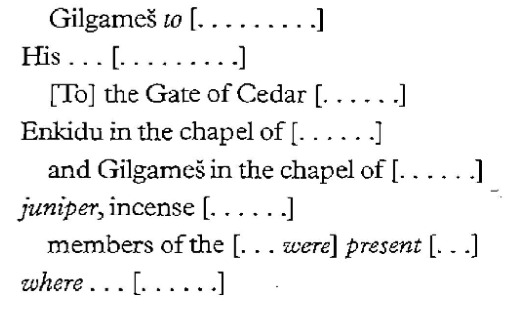
From what I know, the word "chapel" is quite distinctly meaning a place of worship for Christian, which surely this Epic predates by many centuries. The mention of juniper incense made me think that Gilgamesh and Enkidu performed divination and purification ritual, since in ancient Mesopotamia juniper incense is usually used for those rituals. And those rituals are also commonly performed in temple. But I don't understand why the translation didn't use 'temple' like in many other instances in the Epic, especially since the segment before located in a temple, more specifically Ninsun's temple where she adopted Enkidu as his foster son. Like, do Gilgamesh and Enkidu moved place? Do the word for 'chapel' there is different from 'temple' in other segment so it cannot be translated with the same word? What does exactly that 'chapel' word sounds in Sumerian/Akkadian?
Hello, and thanks for clarifying (in dms) which section of the Epic this comes from - it's Tablet III, lines 148-154. The word in question is the Akkadian bīt, which means "house" or "building", and is the root of many more specific terms for different buildings. It could also be used for "temple" or various other kinds of structures. It's the equivalent of the Sumerian e, which has the same set of meanings, and both are written 𒂍 in cuneiform.
George was, like many modern translators, presumably trying to make the text as recognizable as possible to his (assumed) reader, so used "chapel" as a creative liberty. Helle (2021) here uses "temple" with the same surrounding phrasing: "Enkidu in the temple of ... / and Gilgamesh in the temple of ..."
The term used for the temple of Ninsun earlier in tablet III is egalmah, a Sumerian term that literally means "great big building", but is used for a major temple. It starts with the same e sign, 𒂍. Given that we don't know what comes after bīt in the lines here, it's possible it was egalmah, but without a more complete version of this section we can't know for sure. The term bīt is also used in this tablet as part of the phrase for "bath-house" (bīt narmaku III.37), illustrating its more generic "building/house" meaning.
If I were to translate this, I'd probably use "building", just because the lack of context makes any more specific term seem too confident in meaning (this section is extremely fragmentary). As to what this section refers to, it could basically be anything - though if any Akkadianists have thoughts, please reblog with them! And thank you again for your question.
45 notes
·
View notes
Text
Ziggurat of Ur
7 notes
·
View notes
Text

Babylon Sector III outskirts, but edited to look like an early 90s sunset. Mesopotamia is h0t as f$$$, middle of the desert, so I wanted to really show how incandescent this scene is.
Tens of millions of people live here, beneath the crude grip of an ill-tempered man.
#my art#original art#painting#nostalgia#35mm#landscape#concept#concept art#gamedev#lol#new#my artwork#sumerian#wow#scenery#oc#oc art#oc lore#art#architecture#city#digital art#digital illustration#artists on tumblr#digital drawing#digital painting#clip studio paint#drawing
28 notes
·
View notes
Text
^saw a post with Sumerian art and almost tagged to with some dumb shit because I got so excited
#LISTEN. LISTEN. SUMERIAN AND MESOPOTAMIAN ART MAKES ME GO CRAZY I SEE IT AND MY BRAIN DOES SOMETHING#My art history class last semester did nothing but make me such a fucking loser nerd about ancient art#I will see pointed arches and immediately be like ‘oh that’s gothic architecture!’ and get so happy#<- gothic art isn’t technically ancient but yk#MY BESTIE SHOWED ME A PICTURE THEY TOOK IN AN IRISH CATHEDRAL EARLIER AND I HAD TO STOP THEM TO TRY AND FIGURE OUT WHAT PERIOD THE ART WAS#(99% sure it was Byzantine)#spacey speaks#if I was confident enough in the art history at my school I’m telling you I would get a minor in it. if they offered any classes that were-#deep diving into Sumerian and Mesopotamian art I would take that in a heart beat
5 notes
·
View notes
Text
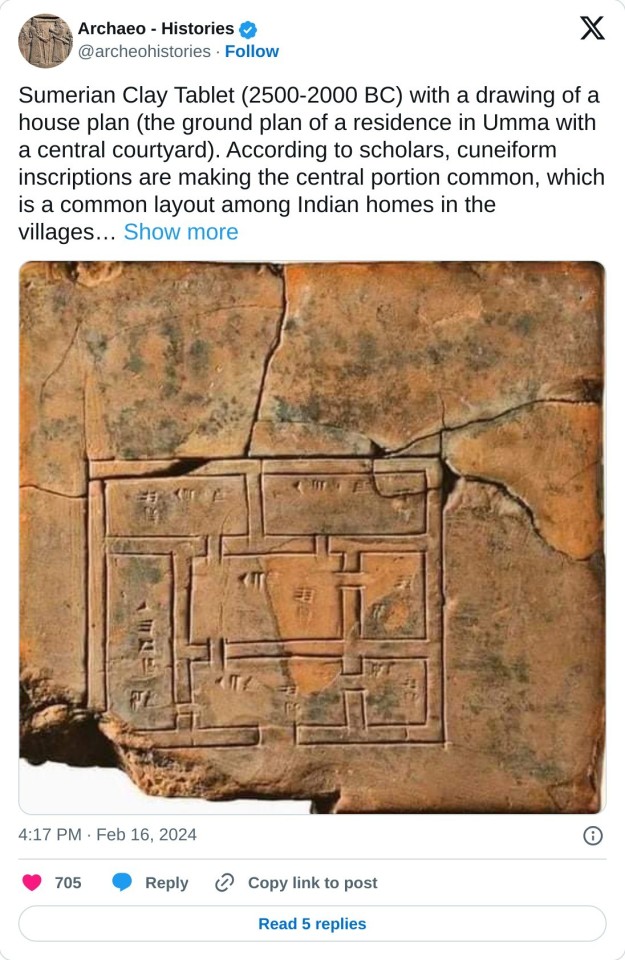
Sumerian Clay Tablet (2500-2000 BC) with a drawing of a house plan (the ground plan of a residence in Umma with a central courtyard). According to scholars, cuneiform inscriptions are making the central portion common, which is a common layout among Indian homes in the villages too. As the ancient and the present Mesopotamian, Persian and Indian architecture - believes in keeping the central portion of a home open from the top - to let in elements of nature. Plus used as a common meeting room for family members. Sumerians considered as the first major civilization of human history, flourished around 4000-2000 BC, between the rivers Tigris and Euphrates of the crescent fertile. This area was prone to violent weather conditions, such as unexpected flooding. These chaotic conditions resulted in Sumerians becoming a highly religious society. However, bleak nature of their religion where the afterlife was essentially a mud pit reflected the harsh conditions of their existence. Their art was also religious in nature as part of an effort to honor their deities in hopes that their lives would proceed with as little tragedy as possible. Art and buildings were constructed of plentiful clay of region as well as wood, copper, rock, and semi-precious stones like lapis lazuli. Study of Sumerian architecture is based on available archaeological evidence, pictorial representation of buildings, and texts on building practices. Materials used to build a house were similar but not exact as those used today: reeds, stone, wood, ashlar, mud brick, mud plaster and wooden doors, which were all naturally available around city, although wood was not common in some cities of Sumer. Although most houses were made of mudbrick, mudplaster and poplar. Houses could be tripartite, round or rectangular. Houses had long-roofed central hallways, courtyards, and storeys. Most houses had a square centre room with other rooms attached to it, but a great variation in size and materials used to build houses suggest they were built by inhabitants themselves. Smallest rooms may not have coincided with the poorest people; in fact, it could be that poorest people built houses out of perishable materials such as reeds on outside of city, but there is very little direct evidence for this. Houses could have shops, workshops, storage rooms, and livestock in them. - Subscribe for Detailed Post - Vorderasiatisches Museum, Berlin
#Vorderasiatisches Museum#Berlin#archaeohistories#architecture#mesopotamia#archaeology#Sumerian#ancient#bulding
3 notes
·
View notes
Text
“Sargon developed this new form of governance by conquering all the Sumerian cities of Mesopotamia, creating what most historians call the first empire in the world.” He added that, until these latest excavations, information on that empire was limited to fragmentary and bombastic royal inscriptions or much later copies of Akkadian inscriptions “which are not completely reliable”. Of the new discovery, he said: “It is extremely important because, for the first time, we have concrete evidence – with artefacts in situ.” He has been astonished by the detail in those records: “They note absolutely everything down. If a sheep dies at the very edge of the empire, it will be noted. They are obsessed with bureaucracy.” The tablets, containing cuneiform symbols, an early writing system, record affairs of state, deliveries and expenditures, on everything from fish to domesticated animals, flour to barley, textiles to precious stones. Dana Goodburn-Brown, a British-American conservator, is cleaning the tablets so that they can be transcribed. The work is both painstaking and exciting, she said: “People just think things come out of the ground and look like you see them in the museum, but they don’t.” One tablet lists different commodities: “250 grams of gold / 500 grams of silver/ … fattened cows… / 30 litres of beer.” Even the names and professions of the citizens are recorded, Rey said: “Women, men, children – we have names for everyone. “Women held important offices within the state. So we have high priestesses, for example, although it was a society very much led by men. But the role of the woman was at least higher than many other societies, and it’s undeniable based on the evidence that we have.” The jobs listed range from stone-cutters to the sweeper of the temple floor. Rey said: “Being able to sweep the floor where the gods and the high priest were located was very important. The cities of ancient Mesopotamia in theory all belonged to the gods. The society worked for the temple state.” The tablets were found at the site of a large state archive building, made of mud-brick walls and divided into rooms or offices. Some of the tablets contain architectural plans of buildings, field plans and maps of canals.
15 March 2025
174 notes
·
View notes
Photo
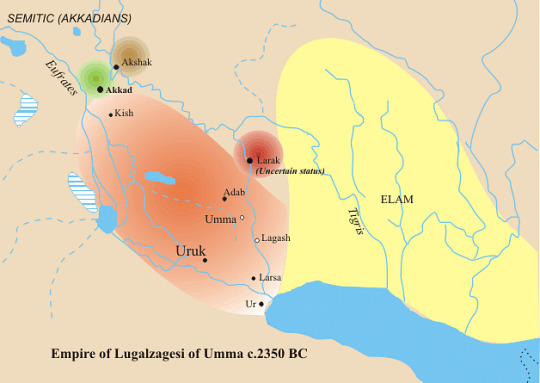
Uruk
Uruk was one of the most important cities (at one time, the most important) in ancient Mesopotamia. According to the Sumerian King List, it was founded by King Enmerkar c. 4500 BCE. Uruk is best known as the birthplace of writing c. 3200 BCE as well as for its architecture and other cultural innovations.
Located in the southern region of Sumer (modern day Warka, Iraq), Uruk was known in the Aramaic language as Erech which, it is believed, gave rise to the modern name for the country of Iraq, though another likely derivation is Al-Iraq, the Arabic name for the region of Babylonia. The city of Uruk is most famous for its great king Gilgamesh and the epic tale of his quest for immortality but also for a number of firsts in the development of civilization which occurred there.
It is considered the first true city in the world, the origin of writing, the first example of architectural work in stone and the building of great stone structures, the origin of the ziggurat, and the first city to develop the cylinder seal which the ancient Mesopotamians used to designate personal property or as a signature on documents. Considering the importance the cylinder seal had for the people of the time, and that it stood for one's personal identity and reputation, Uruk could also be credited as the city which first recognized the importance of the individual in the collective community.
The city was continuously inhabited from its founding until c. 300 CE when, owing to both natural and man-made influences, people began to desert the area. By this time, it had depleted natural resources in the surrounding area and was no longer a major political or commercial power. It lay abandoned and buried until excavated in 1853 by William Loftus for the British Museum.
The Uruk Period
The Ubaid Period (c. 5000-4100 BCE) when the so-called Ubaid people first inhabited the region of Sumer is followed by the Uruk Period (4100-2900 BCE) during which time cities began to develop across Mesopotamia and Uruk became the most influential. The Uruk Period is divided into 8 phases from the oldest, through its prominence, and into its decline based upon the levels of the ruins excavated and the history which the artifacts found there reveal. The city was most influential between 4100-c.3000 BCE when Uruk was the largest urban center and the hub of trade and administration.
In precisely what manner Uruk ruled the region, why and how it became the first city in the world, and in what manner it exercised its authority is not fully known. Scholar Gwendolyn Leick writes:
The Uruk phenomenon is still much debated, as to what extent Uruk exercised political control over the large area covered by the Uruk artifacts, whether this relied on the use of force, and which institutions were in charge. Too little of the site has been excavated to provide any firm answers to these questions. However, it is clear that, at this time, the urbanization process was set in motion, concentrated at Uruk itself. (183-184)
Since the city of Ur had a more advantageous placement for trade, further south toward the Persian Gulf, it would seem to make sense that city, rather than Uruk, would have wielded more influence but this is not the case.
Artifacts from Uruk appear at virtually every excavated site throughout Mesopotamia and even in Egypt. The historian Julian Reade notes:
Perhaps the most striking example of the wide spread of some features of the Uruk culture consists in the distribution of what must be one of the crudest forms ever made, the so-called beveled-rim bowl. This kind of bowl, mould-made and mass-produced, is found in large numbers throughout Mesopotamia and beyond. (30)
This bowl was the means by which workers seem to have been paid: by a certain amount of grain ladled into a standard-sized bowl. The remains of these bowls, throughout all of Mesopotamia, suggest that they “were frequently discarded immediately after use, like the aluminum foil containing a modern take-away meal” (Reade, 30). So popular was the beveled-rim bowl that manufacturing centres sprang up throughout Mesopotamia extending as far away from Uruk as the city of Mari in the far north. Because of this, it is unclear if the bowl originated at Uruk or elsewhere (though Uruk is generally held as the bowl's origin). If at Uruk, then the beveled-rim bowl must be counted among the many of the city's accomplishments as it is the first known example of a mass-produced product.
Continue reading...
112 notes
·
View notes
Text
Insecurities

Anubis x Mesopotamian Goddess
Since a lot of you like Anubis HCs/oneshots so imma be continuing my Anubis fics. We lack information on him in RoR, so I’m adding some of his mythology in this one shot as a heads up. Set and Osiris will be presented. As many of you may know, Egyptian mythology has too many variations. So I’m doing the most known mythology on him, and probably will edit it later during Anubis’s round.
Synopsis: Set never liked you, not even for a moment. He hated how his nephew/son, was all over you like a dog, while Isis and Osiris were completely fine with you courting Anubis. Things could get heated between Anubis and Set.
TW: some violence.
WC: 866
Egypt was normally hot and humid during the day. You were visiting King Osiris with your father Marduk to discuss important diplomatic exchanges with Egypt since your country was neighbours to them.
You had grown rather accustomed to Egypt traditions and admired the wall decorations and architecture in the palace. As you found your way to a room with a fountain in the middle of it while your father and Osiris were discussing trade relations, you took notice of how quiet the area was. As you sat down near the fountain and was about to touch the water, you felt someone’s presence behind you and quickly turned your head nearly panicking. “Ah—! Sorry if this area is restricted!” You weren’t very good at socializing, in fact, your head apologizing silently.
“Huh? It’s not a problem! Besides who are you? Wait, wait you’re not from here actually… hmm,” he was getting really close to you making you nearly step back and trip over your own feet. As you finally glanced up at him, he looked joyful and not mad at all. His long hair was tied behind him in ball sections, and he wore a hat with the face of a jackal. He couldn’t be… no way. Anubis?! You were screaming inside your mind. You met him when you were kids and he has forgotten you. It stung a bit that he couldn’t even remember you.
“No one… it’s fine, I’ll find my way back to my father.” After you tried to dismiss yourself, he called your name making you halt. You basically confirmed his suspicions.
“No way! It’s you! It’s you!” He ran over to you giving you a bear hug of your life squeezing every ounce of air out of your lungs. You were confused by his actions. “I almost couldn’t recognize you, you look prettier and cuter now!” He still hadn’t let you go even when you tried to free yourself. His strong hold on you meant that he definitely missed you all these years.
“My boy! What the hell are you doing?! The king is calling for you.” Another man approached the two of you. Set… he was cold and stoic. Anubis lowered his head as if he was depressed.
Anubis turned to you and gave a cheeky grin. “I’ll see you later—"
“Absolutely not,” Set interjected Anubis who was growing irritated and was ready to defy his uncle. Set mostly hated Sumerians and looped you into his hatred. You were worried about being left alone with Set and silently hoped Anubis wouldn’t leave.
He didn’t, thank god. “And why not?!” Anubis shouted, he was angry. You had never witnessed him like this before. He was seething, Anubis wanted to fight Set.
“No Egyptian god should meddle with the likes of her kind.” Ouch. Set clearly hated Sumerians and you couldn’t help but wonder why. His brother was king, and his adoptive son, Anubis was defying him. Anubis saw your expression change as he was in pure shock at his uncle’s words. He didn’t like seeing you sad after Set put you down along with your people.
“Set, I think that is too harsh.” Isis approached the three of you to stop a potential fight. “This is no matter for you, Isis.” Set was about to raise his hand to Isis but Anubis jumped at him throwing Set against the wall.
“Don’t speak to her like that!” Anubis was pulled back from Isis. He wanted to kill him, the room tension was high. Isis was trying to hold him back and was angry at how her brother was acting this way. Set was cruel and always loathed Osiris and others' happiness.
“You inconsiderate piece of—" Set was caught back by Osiris entering the room with your father next to him. You were thankful that the conflict was stopped. You were saddened by how things turned out. You wanted to catch up with Anubis over the missing years but it seemed like things were impossible for such.
“It seems that I interrupted your squabble,” Osiris turned his head to Set. He was at a loss for words before Osiris told him to leave. He was fuming on the inside and you could tell.
“Are we leaving?” You turned to your father. You had regretted being in the middle of their family conundrums. It seems like your people will never be accepted here.
“What? Now?! Can’t you stay just a little bit longer?” Anubis was practically pouring and it hurt leaving again without any closure like last time.
“Sorry—" you were interrupted by Isis cutting in.
“How about you stay for a bit? I think you can do that, yeah?” She came up behind you and placed a hand on your shoulder. You were blushing a bit since Anubis was excited. Isis knew how depressed he was when the last time you left and it broke her heart seeing him sad for days, if not months.
Marduk and Osiris weren’t opposed to it at all, since they had other discussions regarding you as part of their alliance. It would be for another time to tell you.
You were already set to be wedded to Anubis.


#record of ragnarok#shuumatsu no valkyrie#ror x reader#shuumatsu no valkyrie x reader#record of ragnarok x reader#anubis ror#anubis snv#anubis x reader#record of ragnarok Anubis
109 notes
·
View notes
Note
Could you give me some Kaveh HCs please?
EVERYONE'S FAVOURITE BLONDE SUMERIAN ARCHITECT RAH- i have some for modern!au, general ones, nd some that imply kavetham so-
hcs under the cut !!
General :
- i think a pretty generic one: kaveh with freckles. i don't just mean on his face - i mean everywhere. in some areas they aren't as prominent, but they're definitely still there. (side note: cough cough alhaithan would jokingly draw goofy shapes on them if kaveh allowed him to. brainrot kid alhaitham exists in my head too- that's for another time.)
- would get told by someone "you have doctor's hands," and the thought of him pursuing medicine instead of architecture would stick around until he decides against it because he wouldn't want to dissect animals
- that being said, i don't think he's squeamish per se, but i don't think he'd like opening up an animal.. also the smell if he volunteered to keep the animal parts would be a-grade nasty, and i do not think he'd want to live with it.
- he has mixed up his painting water and drinking water. multiple times. it goes either way.. he dips his brush into his drinking water or drinks his paint water - or both.
- absolutely despises the texture of certain fabrics, especially the really thin and translucent one that frays at the ends whenever it's cut. makes him get goosebumps.
- this is a stretch i think but he excels at making brownies specifically.
Kavetham :
- has a piece of alhaitham's old uniform sewn somewhere on his clothes. where? i'm not sure. he just does.
- he and alhaitham would get matching charms. haitham would straightaway hang his on his keys; kaveh would do the same and then freak out thinking he's lost it only to remember it's on his keys and his keys are with haitham. said charm is now hung somewhere on him (attached to his vision ?? i dunno.)
- they communicate in morse code when in public/a crowded area. alhaitham taps his fingers on his head, kaveh snaps. if they're holding hands, then it's squeezes :3
Modern!AU
- he n his family would watch bob ross painting tutorials, and he'd refuse to sleep until he saw the results even if it was really late at night
- he has cats (two, one calico named kori, nd one orange tabby named piyo)
- he doesn't buy cat towers, he makes them. he has a bunch of cardboard boxes / other materials to make the cat towers since he knows his cats best and knows what they like to do (personalised cat towers !!)
- used to have one of those suitcases with wheels that you could ride as a kid, he wants one again but he saw how expensive they were and just decided against it.
that's all i have in my brain as of now. he's so beloved they could never make me hate him.
#luminari writes !#genshin kaveh#genshin impact kaveh#kaveh#kavetham#kaveh hcs#kaveh headcannons#random blurbs#headcannons
26 notes
·
View notes
Text
🦁🧿🌙 Pre Islamic Goddesses 🌙🕋☀️
Al-Lāt, syrian and arabian goddess of destiny and the city Mecca, Lady of the temple, her Name means „Goddess“ and is the female version of „Allah“, represented by the lion, married to Bel, prototype for the greek goddess of wisdom, Athena, her followers took her figures with them in battles, one of the three goddesses of Mecca, the kaaba 🕋 was build for them, her shrine was a red stone cube
Al-Uzza, syrian and arabian goddess of destiny and the venus, one of the three goddesses of Mecca, the youngest of the them, she got worshipped at the kaaba 🕋 and was the greatest idol of the Qurayash who controlled Mecca, they used to journey to her, offer gifts and sacrifices, her shrine was a white stone cube
Anat, syrian and egyptian goddess of war and protector of wild animals, goddess of love and eternal virgin, mother of all, life and death
Ašera, syrian-canaanite sea goddess
Astarte, semitic goddess of love and fertility
Aštoreth, ugarit goddes, bride of the tyrrhenian sea,
Athirat, ugarit sea and sky goddess, lady of the sea, producer of gods, lady of gods
Ereškigal, sumerian goddess of the underworld and Inannas older sister, she can kill with her eyes, snake goddess, she is naked, with eyes out of stone and black hair, sometimes she wears a lions head and her palace is out of lapislazuli
Han-Ilat, northern arabian big goddess
Inanna, sumerian goddess of war, sex, love and the venus, lady of the sky, lady of all houses, city godess of Uruk, female leader goddess, her symbols are the moon and the star
Išhara, syrian underworld goddess
Ištar, babylonian and mesopotamian goddess of war, sex and the venus, most important diety in the ancient world of middle east, many goddesses are versions of her symbols are lions and the star
Ištar of Arbela, assyrian goddess of war
Kiriša, elamic mother goddess with an aspect of war, Lady of the sky, benefactor of the kings, mother of gods
Kulitta, servant of Ištar/Šauška
Lamaštu, babylonian sky goddess, demon with lion head who eats children and makes people sick, kills innocent people, always around rotten and filthy stuff like feces and dead animals,
Lilithu, sumerian goddess of mischief, misery, the night and the storm who lives in ruins, seduced men and stole children
Manat, arabian goddess of the moon, the venus, destiny, and one of the three big goddesses of Mecca. Her shrine was a black stone cube, pilgrims used to cut their hair at her shrine to conplete their journey to the kaaba 🕋
Nammu, sumerian creator goddess of the primordial sea, created together with her son Enki the first men out of clay
Nanše, sumerian goddess of water sources, and brooks, divination, dream interpretation and the holy order, most important goddess in Lagaš, Mother of her daughters Ninmah and Nunmar
Ninatta, servant of Ištar/Šauška
Ningal, mesopotamian goddess, wige of the moon god Nanna, great queen, high lady, lady, star of the prince, sevenfold light, treasured, goddes of the city Ur, goddess of epiphany, mother of Inanna and the sun god Ut
Ninmah, sumerian goddess of midwivery
Ninsianna, babylonian goddess, rust red lady of the sky, pure and sublime judge, sometimes war goddes with a scimitar and a lion headed club, she is the goddess of venus and she wears a star on hear horned crown
Ninšubur, sumerian goddess and holy servant of Inanna, Lady of the servants, been very popular because she was seen as a messenger between men and gods, seen as personal goddess by some kings, guardian who fights with the weapons of air and the sky
Nisaba, sumerian goddess of corn, goddes of writing texts, science and architecture, sister of Nanše and Ningirsu
Pinikir, elamian, later mesopotamian, hurrian and hittian mother goddess
Šauška, hurrian goddess of love, war, incantations and healing
Tiamat, babylonian goddess of the sea, embodiment of salt water, married to Abzu the embodiment of fresh water
Tunit, punish goddess of fertility and guardian of cartago, virgin mother of Baal, who gives him every year new life, her attributes are pomehrenates, figs, ears of corn and the dove
#al-lat#allat#aluzza#uzza#anat#ašera#ashera#astarte#aštoreth#ereshkigal#ereškigal#Han-Ilat#Hanilat#Inanna#Išhara#ištar#ishtar#kiriša#lamaštu#lilithu#al-manat#manat#nammu#Nanše#Ninatta#Ningal#Ninmah#Ninsianna#Ninšubur#Tiamat
21 notes
·
View notes
Text
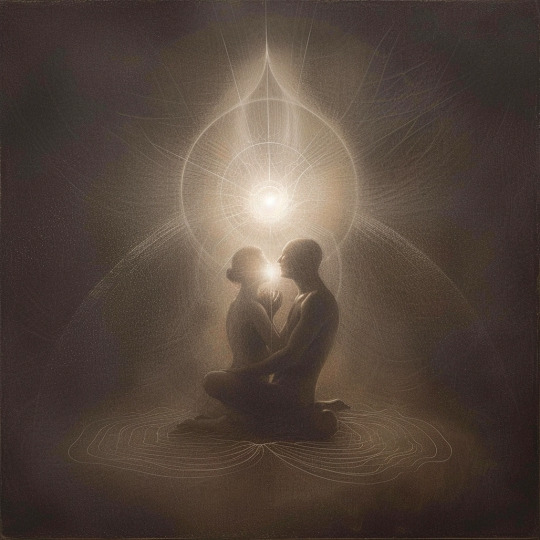
The Flower of Life
There really is some deep rooted symbolism behind this captivating image. Some say it’s representative of the union of the sacred Masculine and the Divine Feminine, the connectedness of all living things, and others see it as the cycle of life, death and rebirth. Let’s explore the depths of the topic.
Origins & Symbolism The origins of the Flower of Life trace back to the dawn of civilisation, where it is believed to have emerged as a symbol of cosmic order and divine harmony. Its precise origins are shrouded in mystery, with some attributing its creation to ancient cultures such as the Egyptians, where it was found in the temple of Osiris and said to contain a ‘secret code’ (underpinning the basic building blocks of the universe), and also the Sumerians, and the Greeks.
At its core, the Flower of Life is composed of multiple evenly-spaced, overlapping circles, forming a mesmerising geometric pattern reminiscent of a flower in full bloom. Within this pattern lies a myriad of geometric shapes, including triangles, hexagons, and pentagons, each imbued with its own symbolic significance.
The Flower of Life is often associated with sacred geometry, a branch of mathematics concerned with the study of geometric forms and their spiritual, philosophical, and symbolic meanings. It is believed to represent the interconnectedness of all living beings, the fundamental unity of existence, and the underlying order of the universe.
Spiritual Significance In spiritual traditions around the world, the Flower of Life holds profound significance as a symbol of creation and interconnectedness. It is often regarded as a visual representation of the divine blueprint of the cosmos, with each circle representing a stage in the process of creation.
Within the Flower of Life, one can find various sacred symbols, including the Seed of Life, the Tree of Life, all 7 Chakra systems, and the Metatron's Cube, each carrying its own symbolic meaning and spiritual power. These symbols are believed to hold the keys to unlocking higher states of consciousness, facilitating spiritual growth, and connecting with the universal source of energy and wisdom.
Healing & Transformation Beyond its spiritual significance, the Flower of Life is also associated with healing and transformation. It is believed that meditating upon the pattern of the Flower of Life can help to harmonise the mind, body, and spirit, promoting health, balance, and inner peace.
In recent years, the Flower of Life has experienced a resurgence in popularity, with many people incorporating its imagery into their spiritual practices, artwork, and jewellery. Its intricate beauty and profound symbolism continue to inspire awe and fascination, serving as a potent reminder of the interconnectedness of all things and the infinite possibilities that lie within the universe.
Modern Interpretations In the modern era, scientists, mathematicians, and artists have continued to explore the mysteries of the Flower of Life, uncovering new insights into its geometric properties and mathematical significance. Through computer simulations and mathematical algorithms, researchers have gained a deeper understanding of the complex patterns and symmetries inherent in the Flower of Life, shedding light on its underlying principles of order and harmony.
Furthermore, the Flower of Life has found its way into various fields beyond spirituality and art, including architecture, design, and technology. Its geometric principles have been applied in the construction of sacred buildings, the development of advanced engineering techniques, and the design of innovative products and structures.
The Flower of Life: Mysteries of Sacred Geometry:
38 notes
·
View notes
Note
Hi! I love this blog btw, it’s been fun both from a historical and creative point of view. Thanks a lot to this blog, I have been utilizing more and more bits of Sumerian for the world building of my stories and I was wondering if you could help me with a few words I’ve been struggling with. I’m sorry if you’ve done these before and I missed them.
I was looking for a translation of
Temple/Shrine
misfortune/bad luck
And Memories/recollections
The first two are for the purpose of naming Temples such as “Temple of Misfortune” “Temple of Blood” and “Temple of Life”
Thank you so much! Your work is much appreciated!
Hello! I'm glad to hear this blog has been a useful resource for you!
The basic word for "temple" in Sumerian is the same as the word for "house" or "building", which is e 𒂍. You can be more specific by using egal 𒂍𒃲 "palace, temple", which literally means just "big house".
There are several words for "shrine": zag 𒍠 or esh 𒀊 can both mean "shrine, sanctuary", while ublilla 𒌒𒆤𒇲 is "outdoor shrine" specifically, and esuhur 𒂍𒋦 is the shrine at the summit of a temple building.
I've previously answered about how there isn't a precise match for "good luck" in Sumerian, but they did have a word for "misfortune": kana, which Halloran lists as "apprehension, worry, affliction, trouble, misfortune, sorrow" (and the ePSD adds "dark, gloomy"). It's written in any of several ways in cuneiform, 𒊝 or 𒅸 or 𒅤.
And I've also answered previously about "memory", for which there also isn't a great match (but see those posts for more details!)
If you want to say "temple of X", you can use egal + X + the genitive case, which most often appears as -a following a consonant (egalumuna "temple of blood") or disappears following a vowel (egalkana "temple of misfortune", egaltila "temple of life") - though in a full sentence it can be a little more complicated. If you have a longer context translation, let me know!
12 notes
·
View notes
Text
The Sumerians were the people of southern Mesopotamia whose civilization flourished between c. 4100-1750 BCE. Their name comes from the region which is frequently – and incorrectly – referred to as a “country”. Sumer was never a cohesive political entity, however, but a region of city-states each with its own king.
Sumer was the southern counterpart to the northern region of Akkad whose people gave Sumer its name, meaning “land of the civilized kings”. The Sumerians themselves referred to their region simply as “the land” or “the land of the black-headed people”.
The Sumerians were responsible for many of the most important innovations, inventions, and concepts taken for granted in the present day. They essentially “invented” time by dividing day and night into 12-hour periods, hours into 60 minutes, and minutes into 60 seconds. Their other innovations and inventions include the first schools, the earliest version of the tale of the Great Flood and other biblical narratives, the oldest heroic epic, governmental bureaucracy, monumental architecture, and irrigation techniques.
After the rise of the Amorites in Mesopotamia, and the invasion of the Elamites, Sumer ceased to exist and was only known through references in the works of ancient writers, including the scribes who wrote the biblical Book of Genesis. Sumer remained unknown until the mid-19th century CE when excavations in Mesopotamia unearthed their civilization and brought their many contributions to light.
#studyblr#history#prehistory#archaeology#civilization#politics#sociology#technology#invention#horology#languages#writing#sumerian religion#judaism#christianity#fertile crescent#mesopotamia#sumer#amorites#elam#iraq#kuwait#sumerian language#akkadian language#cuneiform#sumerian cuneiform
10 notes
·
View notes
Text
What i dont like about the Dune movies
It is set in a world where royals own whole planets, space travel is fueled by LSD and they have medieval type sword melee battles.
Yet it all looks so boring and bleak, the aesthetic style of the whole world is just "IKEA".
Even the supposedly overindulgent and greedy baron dresses more humble than a monk.
So much could be conveyed about characters, factions and cultures thru their clothing and architecture, but no, everyone lives in the same brutalist, minimalist fort that apparently got built on every planet and wears the same grey and beige suits.
If the story takes place in 10 000 years into the future, then why do they have the same uniforms as today? Imagine our officals dressing like ancient sumerians

The costume designers could have had the opportunity to go wild with the clothing of a culture that is both futuristic, ancient and mystical. But no, the WW1 uniform and the minimalist current year type corporate logo for their coat of arms will be just fine.
The soldiers are the worst, all of the three factions look the same with slight shade variations. They have no identity to them.



If i never saw the movies and you told me that one of these came from an extremely sadistic, greedy and overly industrialised world. One came from a lush water world whos people are the descendants of the greeks. And one is the guard of the emperor of humanity. I would have a hard time figuring out wich is wich. From a distance and in action they blend together. Terrible costume design. Diferent branches of humanity have been living on separate planets for thousands of years, why does everyone look the same? They could have got so creative but all of them got the generic sci-fi gear #3748
Just look at some of these examples of actual historical fighters:

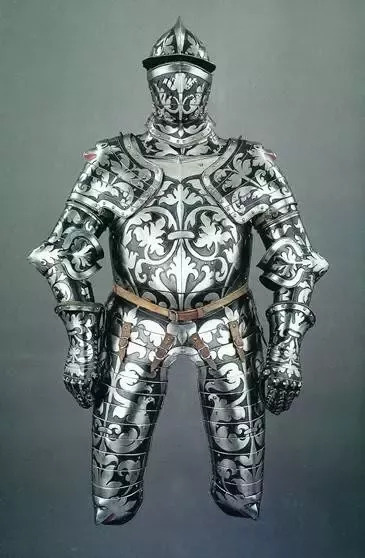
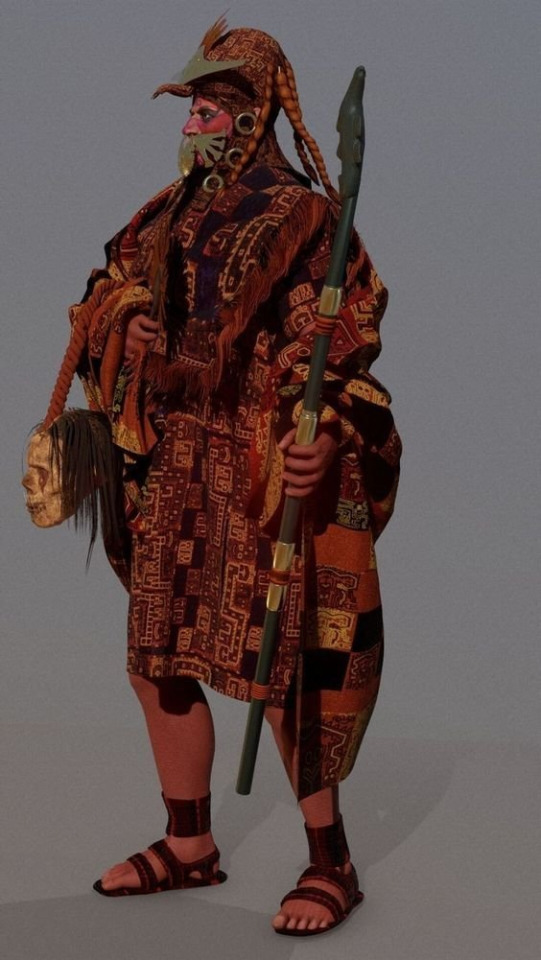

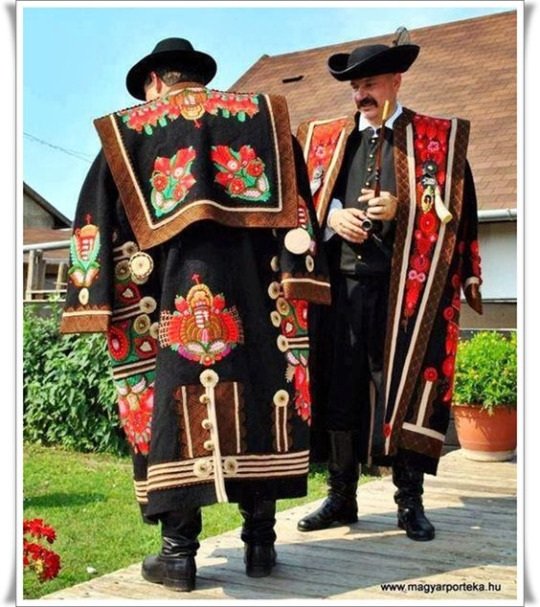
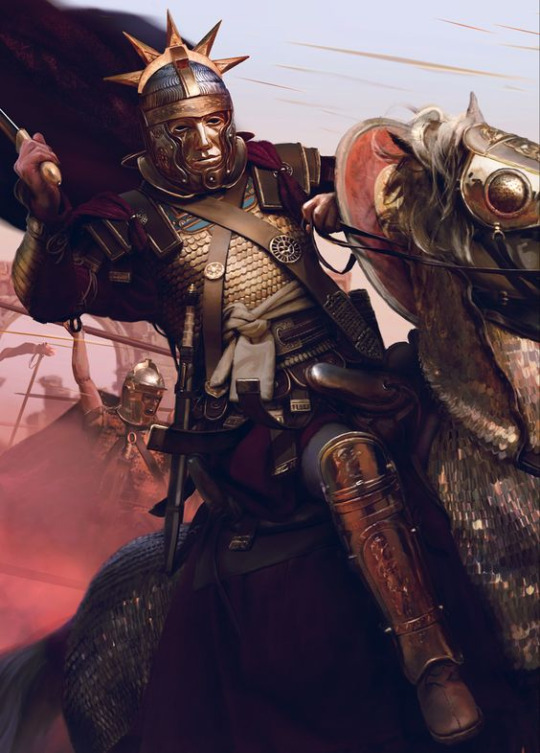
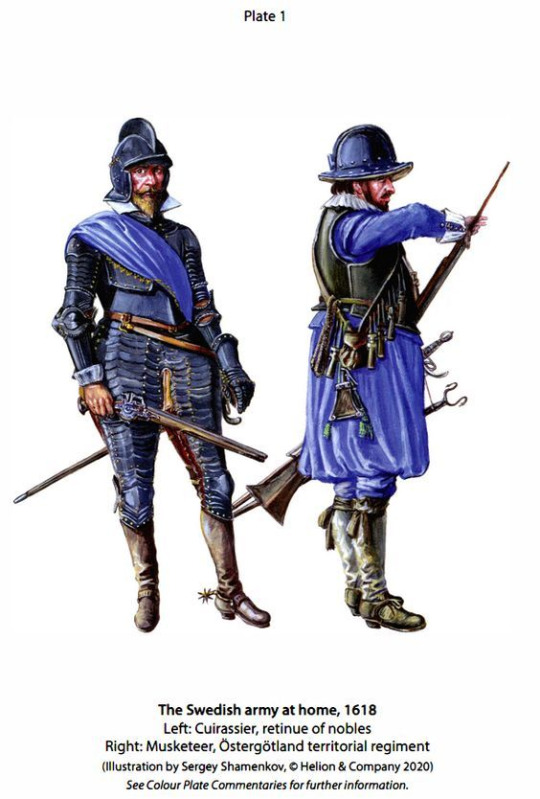


The world feels kind of small, the reveal of the emperor of the known universe was pretty underwhelming, he felt more like some rich dentist in a mediocre house, when he ceremoniusly recived the message from Paul, it felt like it was recorded in someones backyard.
The type of vibe i was expecting:




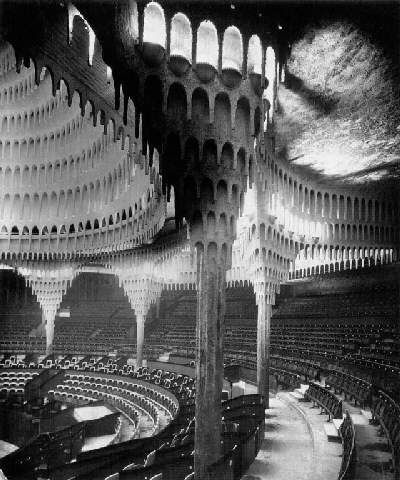
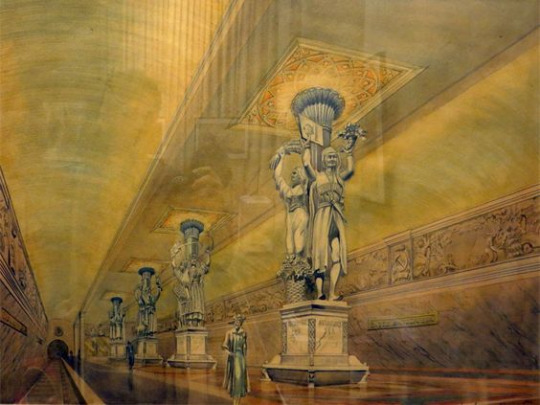
I have to admit, at least the harkonnen world had some pretty neat ideas, like the black and white sun or the liquid fireworks.
#dune#dune part 2#dune movie#atreides#paul#paul atreides#movie#scifi#fantasy#costume design#costume#design#art#harkonnen#fremen
42 notes
·
View notes
Note
Anon who wrote that piece about Traveler discovering comatose Fragile!Reader here (could I be called Dreamer Anon or is that name taken already?) with another possibly big brain idea: What if Nahida stumbled across Fragile!Reader's dream, since it's an altered version of the Akasha Terminal that's keeping their everlasting dream going?
It was always interesting to look into others' dreams, after all the subconscious can hold a lot of information about a person. Things they think about often, their day to day lives, even memories. Some dreams were so abstract it was nearly impossible to tell what was meant to be happening. Some were also so mundane, just the person going about their daily business even in their sleep.
But this dream felt...odd is so many ways.
Firstly, even though it looked like she was standing inside someone's home in Sumeru, Nahida felt as though she was currently thousands of miles from her nation. Sure, she could see the rainforest just outside the windows, but it was almost as if they were in a spot they shouldn't be.
Secondly, this was a style of Sumerian architecture that hadn't been used in several hundred years. While the modern style was similar, they were still small differences between the two. Did this dream belong to someone who studied architecture, or were they someone who just happened to like the old aesthetic and so their dream home just looked like this?
The home was also a bit of a mess. Not a chaotic one, but just enough to show signs of multiple people living in it. Nahida could even hear someone in what she assumed was the kitchen, just beyond the archway to her right. They were humming a random tune, one that the person was making up as they went along, mixing in with the sound of plates and a pan being moved around.
Nahida couldn't resist looking to see who's dream this was. So she turned to the right, stepped into the kitchen, and found herself looking at a face that had vanished from the Akademiya centuries ago.
They looked just as shocked to see her, as well as terribly confused.
"Um...Hello there little one. How did you get in here? Are you lost?" They said as they knelt down to her level.
Did they...Not recognize her?
DREAMER ANON ILY YOU'RE MAGNIFICENT 😭💖💖💖
Nahida loved to look into other people's dreams. It was always interesting to peer into the lives of humans who she desired to know more about, and even to converse with them. As the God of Wisdom, she has experienced so many dreams - good, beautiful ones to deceitful, harmful ones.
But Nahida had never quite stumbled upon a dream such as this one. For one, she could sense this person was... very, very far away. At least, not in her nation. And now she had begun to look around, the scenery was far different than what she gazed upon normally in her city. It was like she was taken back in time, for the architecture was not one she had seen for a very long time.
Even present-day architects did not know too much about this style. How did this person discover this? Her curiosity and desire for knowledge about this person grew with every passing moment. She did love to meet new people. Perhaps you were a scholar away from Sumeru? The state of your house did remind her of how some of the busy scholars lived.
A gentle but tired hum sounded from the kitchen, and the small Archon could not resist anymore. She peeked in and her surprise could not be described.
Nahida knew you well. Zandik, or rather Dottore now, and you. The two scholars had disappeared and were expelled from the Akademiya. She knew that the former had become a Harbinger... but you... she did not know you were still alive. A bit of digging had allowed her to discover her situation previously, but she always assumed that you had succumbed to illness. To think you were alive...
When Nahida tried to silence her wild thoughts she realized she had been noticed as well. The silence was palpable as you slowly put down a plate and took tiny steps toward her. Nahida wasn't the only curious one. "Well... it's been a long time since I've had visitors. Especially not tiny ones. How'd you get in here, little one?" Your tone was curious and a bit shy, void of hostility.
You seemed to not recognize her. Nahida could sense you had lived for a long time, longer than most humans, and a long life tends to have repercussions on the mind and body. Either you did not know the face of the Dendro Archon, or you had forgotten...?
Did you even know you were in a dream? The way you were acting was so natural, so normal as if you had been here your whole life and never left. And how did Dottore even manage to prolong your life? Truly, she had so many questions. But she could not help but feel conflicted. You were associated with that man... one who she could never forgive, but here you were. Living so innocently without a care in the world, it seemed.
But Nahida had to know more.
#smooches talks#dreamer anon#fragile reader <3#dottore love notes <3#nahida is my baby i want to give her a hug and tell her everything abt my life
114 notes
·
View notes
Note
hiiii harbinger kaveh au id looove to hear please and thank youuuu :3
*maniacal laughter*
Oh my friend I would be So Glad to tell you.
Essentially, the basis of the AU is Kaveh is kidnapped by Dottore when he’s about 5, dies, and his soul is used as the basis of a new soul.
The soul is basically too big to fit in a puppet body, and would need about 5 to fit comfortably.
Dottore has Sandrone make 10. When she asks him what the base soul’s body looked like, he lies.
Kaveh wakes up, remembering nothing after he first saw Dottore, feeling oddly empty, and looking far too different to convince anyone of who he is.
(Dottore and Sandrone placed the bits of soul with the memory of being experimented on, as well as parts that held the emotions, in the other puppet bodies.)
All the fragments except our fragment know that they are puppets, that they are spies, and that they serve the Fatui. Our fragment as no idea how he got here, why he looks like this, or why his feelings are stunted.
Dottore finds him, and removes him from Sumerian city. He then abandons Kaveh in a run-down area.
Unfortunately (or fortunately) for Dottore, Kaveh keeps discovering he is a puppet.
Dottore wipes those memories, and the memories of transferring him to an older-looking body so he doesn’t get suspicious. Dottore gives the memories to Sandrone, who sighs, sticks them in a new puppet, and gives the puppet its orders.
Eventually, Dottore decides that he’s gotten tired of wiping Kaveh’s memories, and lets him discover that he is a puppet.
Kaveh is 12 years old.
He is finally given his mission:infiltrate the Akademiya.
And from there, we proceed as canon does, with the added caveat that Kaveh is reporting to the Fatui, until 5 years before the Archon quest.
Dottore summons him. He is told to return with him to Snezhnaya.
Kaveh does as he is told. He has no reason to not trust Dottore.
When he arrives, a new puppet is shown. Dottore forces him to let go of his body. He does as he is ordered. He’s done it many times before.
He feels the connections of the other parts of his soul as he enters the newest puppet. He sees his old body collapse on the ground. Disconnected, he notes how it always feels a bit unsettling to see them collapse.
He closes his eyes, and he feels the connections again. This is his new ‘main’ body. But there’s a problem. Kaveh doesn’t want to leave Sumeru.
He has a life there. He has friends there. In his life, masquerading as someone dead is the happiest he ever is. Kaveh doesn’t want to think about what that means.
Fortunately for him, the Tsaritsa is capable of kindness. She allows his Kaveh identity to remain functioning. A ‘long-term assignment’, she calls it.
Kaveh knows what this will mean. He’ll have to scrape and scrounge for time as Kaveh, to not let that puppet remain on autopilot forever. But he dies not dare argue with his Archon.
Brighella, 10th of the Fatui Harbingers, agrees.
That’s really all I have for a cohesive story so far, but I do have snippets!
He tries so hard to be a good person as Kaveh because it’s his only opportunity to be a good person, no repercussions.
He refuses to contact his mother both because he doesn’t want to bother her, and because too him, her son is dead, and why would she want to talk to him?
He clings to architecture because he loves it, and he knows he won’t get much of it when the Tsaritsa needs him.
Alhaitham knows that he’s a puppet, and that he works with the Fatui. He hasn’t said anything. He doesn’t ever plan on saying anything.
Also for Silliness Purposes: sometimes when Kaveh’s had a long day, and Mehrak beeps at him, he’ll just. Beep back.
Kaveh can remotely control the puppets with his soul fragments from his ‘main’ body, as well as enter them. He needs to reenter the ‘main’ body to go to a different body, though.
I also made a playlist for this AU!
#if the timeline is inaccurate no it isn’t#also I forgot to say in the post but the Big outburst are when he feels normal levels of emotion so he overblows it#because he’s used to overcompensating#genshin impact#kaveh#harbinger kaveh#brighella AU
7 notes
·
View notes